TUCSON CACTUS AND SUCCULENT SOCIETY |
2024 - Monthly Meetings Archive
For 2025 Meetings, go to Meetings (first level on the menu)
Thursday, November 7, 2024 7:00 pm "Adventures in Two New Gardens and in a botanical Paradise"
Presented by Rod Haenni President of the Cactus and Succulent Society of America |
| I will be speaking about the two new crevice gardens I've built and planted in the past 1 1/2 years, one in the Oro Valley and one at my home in Littleton, Colorado. I will also illustrate the talk with photos from the gardens and from habitats visited in South Africa in September, 2023, emphasizing mesembs.
Please share and socialize with your fellow members at our monthly meetings by bringing some type of finger food for the refreshment table. |
Cyphostemma curorii | Aloinopsis 'Morning Sky' | Echinocereus triglochidiatus 'White Sands' crossed with E, mojavenensis fma. inermis |
|  |
|
|
|
Opuntia macrohiza from Ohio | Cephallophyllum 'Flash' with Cheiridopsis denticulata |
We are always thinking of your safety and if you are not feeling well we ask that you join us on the internet Zoom presentation. If you're doing well and would like to attend, you are welcome to come and join us for this special in person presentation (masks will be encouraged but not required). This meeting will also be a Zoom program and will be an important educational and informational event you must see. Also, if using Zoom, be sure to log in to win a $25.00 gift certificate from TCSS or choose a copy of the new 3rd edition of the Field Guide to Cacti & Other Succulents of Arizona. Excellent plant give aways will take place at the in person meeting but that portion of the program, because of the recording, will not appear on Zoom. When leaving the live in person meeting, please enjoy great refreshments provided by our member volunteers and also, everyone can get a special free plant offered to you by the TCSS. |
Thursday, October 3, 2024 7:00 pm "Flora of the Municipality of Huatabampo, Sonora, Mexico. Authors:
Presented by Thomas R. Van Devender
|
| Thomas R. Van Devender was the Senior Research Scientist at the Arizona-Sonora Desert Museum in Tucson, Arizona for 25 years. He has over 150 publications on local floras, biogeography, paleoecology, desert grassland, ethnobotany, the Madrean Archipelago/Sky Islands Region, and Sonoran amphibians, reptiles, insects, and mammals, including jaguars and ocelots. He has collected nearly 30,000 herbarium specimens in Sonora, which are mostly deposited in the ARIZ, USON, and MEXU herbaria. From 2009 to 2014, he managed the Madrean Archipelago Biodiversity Assessment (MABA) project at Sky Island Alliance to document the diversity of plants and animals in the Sky Island mountain ranges in Sonora. In May 2015, he became the Manager of the Madrean Discovery Expeditions (MDE) at Greater Good Charities. Since 2009, he has organized 20 binational expeditions with large volunteer groups of taxonomic specialists, land managers, professors, students, and photographers to make biotic observations in Sonoran Sky Islands. These biological records and high-resolution images are publicly available to support research, conservation, and education in the MDE (Madreandiscovery.org) database, which is the best source of biological records for Sonora. TCSS Meeting Refreshments Please share and socialize with your fellow members at our monthly meetings by bringing some type of finger food for the refreshment table. |
|
|
|
We are always thinking of your safety and if you are not feeling well we ask that you join us on the internet Zoom presentation. If you're doing well and would like to attend, you are welcome to come and join us for this special in person presentation (masks will be encouraged but not required). Excellent plant give aways will take place at the in person meeting. When leaving the live in person meeting, please enjoy great refreshments provided by our member volunteers and also, everyone can get a special free plant offered to you by the TCSS. |
Thursday, September 5, 2024 7:00 pm "Mapping and Monitoring Populations of Turk’s Head Cactus and Pima Pineapple Cactus in southern Arizona: Emergent Perspectives and a Growing Alarm about their Future"
Presented by Robert J. Schmalzel |
I began setting up permanent plots and monitoring both Turk’s Head (TH) and Pima Pineapple (PP) cacti in 1998 with small grants from Arizona Dept of Agriculture and Fish and Wildlife Foundation. In 2018 through 2021 I focused on a dense population of Pima Pineapple Cactus on the Buenos Aires Natl Wildlife Refuge (BANWR). In addition I have seeded PP in several areas around 2000. Emergent perspectives include: • Seed to first flowering in the wild requires about 45 years for TH, about 20 years for PP. Without an awareness of how old PP plants are, researchers on BANWR have identified dense stands of mesquite and Lehmann’s lovegrass as “habitat” for PP; it is more likely that these PPare vestiges of a plant community 50 years ago that permitted the spread of PP seeds into the area. • TH in 1998 occurred in high densities on Horquilla Formation on both Waterman and Vekol mountains, about 1 plant per 1-meter². Seedlings established on Horquilla, independent of parents. TH on the alluvium around the Waterman Mountain established primarily within the spine apron of young adult plants, an example of parental care, recognized for other plant species in tropical mountains. Human theft of TH on the alluvium has been ongoing since 1998; theft of young adults removes the microsites for seedling establishment. • About 95% of the dense population of TH on the Waterman Mountains has been killed/eaten since 1998. Desert bighorn sheep are responsible for this unsustainable mortality. Several features of sheep feeding on TH will be described. TH in Arizona is federally listed. Desert bighorn sheep are not. Yet, priority is given by Arizona Game and Fish Dept. (AGFD) and Bureau of Land Management to safe-guarding the sheep; no consideration has been given to conserving TH on this mountain. AGFD built a rain cachement for sheep adjacent to the dense TH patches. Today the few remaining TH on Horquilla grow beneath ocotillo or bedrock outcrops where sheep cannot feed on them. John Scheuring has worked on removing invasive grass and ‘restoration’ of the landing strip, north side of the Waterman Mountains. Restoration of the landing strip has involved chisel plowing, seeding with native plants and adding many tons of branches (as termite food). These actions will create an area suitable for pocket gophers (Thomomys bottae). Gophers sever the roots of TH at the base of the plant. The landing strip had been built on alluvium deposited over 1 million years ago; it is naturally consolidated/indurated and should not have been plowed. Plowing, seeding and addition of brush for termites set up conditions for colonization by Thomomys, precluding TH from the landing strip. • Similarly, Tom Ellis (BANWR manager in the 1990s) chisel plowed a total of about 6-miles² on the Refuge in order to remove snakeweed (Gutierrezia spp.) stands. The plowing occurred over several years at a number of sites and resulted in the rapid establishment of dense stands of Lehmann’s lovegrass. PP occurred in the coppice mounds around snakeweed plants. Chisel plowing removed PP from this large area, as well as displacing tortoises, gila monsters, and nest sites of Cassin’s sparrows and Lesser Nighthawks, all present in the original snakeweed stands, and absent today. A number of monsoon forbs grew in the snakeweed communities that were eaten by pronghorn. These forbs no longer exist in the Lehmann’s lovegrass stands. | • The Forest Service around 1995 built two cattle exclosures along Duquesne Road, east of Nogales, in order to protect the densest patches of PP. The Duquesne Road PP population has been monitored annually by the Sierra Vista District of Coronado National Forest for the last nearly 30 years. During that time, the population has decreased from about 150 to 1. Forest Service now mandates the rancher not exceed 35 or 40% utilization of the grass. In fact, the 150 PP were present in the area because of a high level of grass utilization (estimate > 80%). Bare ridgelines near Duquesne Road provided safe areas for antelope jackrabbits to sit, defecate and disperse PP seeds into the areas. Currently the grass is too dense within and outside the exclosures for antelope jackrabbits to use. • On BANWR as well as a number of sites in the Santa Cruz and in the Altar valleys, I set up camera traps on fruiting PP. I recorded with videos at least 50 separate instances of antelope jackrabbits removing the fruits from PP. They chew the fruits briefly before swallowing. Many of the seeds emerge intact; of 170 seeds I recovered from jackrabbit dung (pellets), at least 70% germinated. In the Recovery Plan for PP, Fish and Wildlife Service includes a photo of a Harris Ground Squirrel with a PP fruit and list the birds and mammals that were photographed by their camera trap. The ground squirrel is a seed predator. Forest Service built rabbit cages around PP along Duquesne Roadca 1995. When I visited the cages with Forest Service personnel, entire sets of fruits were still on the PP plants from the preceding year. I asked the people about which animals were responsible for seed dispersal. They did not know and were not interested. • Rabbit hemorrhagic disease Type 2 spread across the western USA in 2020, reaching Pima County in April, 2020. Antelope jackrabbits were abundant prior to the arrival of this virus. Antelope jackrabbit populations collapsed when the virus arrived. Four years later only about 1 to 2% of the original population exists. It is likely that PP is no longer effectively dispersed. I expect PP to decline or disappear within the next 20 years. • Annual monitoring of patches of rare, sensitive or federally listed plants is viewed as a chore by federal and state agencies. Get in; get out. On several occasions John Anderson (BLM botanist retired)described how uninteresting monitoring of rare plants was. He would intone that ‘rare plants were losers, they used to be widespread but had lost out to more modern competitors, he should only stop at a historic patch, and record whether some individuals are still present, check the box present or absent, and drive away.’ • Monitoring plant populations provides a window into natural selection. Juvenile cacti and adult cacti that ‘shrink’ suffer almost no mortality; the shift to adults with elongating stems is accompanied by an abrupt increase in stem mortality for both TH and PP. This is very likely the case for many species of cacti in the tribe Cacteae in the Chihuahuan Desert. Why are so many of these adult ‘shrinkers’? • Graduate degree programs at U of A, ASU and NAU do not challenge students in the environmental sciences to think critically and adaptively. The bulk of students that are hired afterwards to manage Federal and State lands are not/will not be up to the task of critically evaluating management decisions and their consequences. This is a crisis unfolding. |
TCSS Meeting Refreshments Please share and socialize with your fellow members at our monthly meetings by bringing some type of finger food for the refreshment table. |
We are always thinking of your safety and if you are not feeling well we ask that you join us on the internet Zoom presentation. If you're doing well and would like to attend, you are welcome to come and join us for this special in person presentation (masks will be encouraged but not required). This meeting will also be a Zoom program and will be an important educational and informational event you must see. Also, if using Zoom, be sure to log in to win a $25.00 gift certificate from TCSS or choose a copy of the new 3rd edition of the Field Guide to Cacti & Other Succulents of Arizona. Excellent plant give aways will take place at the in person meeting but that portion of the program, because of the recording, will not appear on Zoom. When leaving the live in person meeting, please enjoy great refreshments provided by our member volunteers and also, everyone can get a special free plant offered to you by the TCSS. |
Thursday, August 1, 2024 7:00 pm "What is a Boojum? When worlds collide in the Sonoran Desert..."
Presented by Robert A. Villa |
The Sonoran Desert is defined by a confluence of rich biological and cultural diversity. This is especially highlighted when a uniquely Sonoran Desert plant was branded with the name “Boojum” - an entity that. The event recalls auspicious events that thread biogeographic, Indigenous, English, and Spanish history, taxonomy, and imagination. The presentation will also briefly cover the story of the Desert Laboratory on Tumamoc Hill, and the nomenclatural origins of Fouquieriaceae. Robert is a Tucsonan and conservationist deeply in love with the Sonoran region — studying, exploring, and documenting it’s bio-cultural diversity (often with violin in tow) – specializing in amphibians, reptiles, plants/horticulture, agave and sotol appreciation, landscape evolution and biogeography, ethno-biology, and gastronomy. He has consulted for and assisted in the production of multimedia in the Sonoran region, and published and presented in academic, popular, and local outlets. He is president of Tucson Herpetological Society, Greenhouse Curator and Community Outreach Assistant at the Desert Laboratory on Tumamoc Hill, University of Arizona. He’s worked in a variety of settings, interacting and cooperating with an eclectic swath of folks. In 2019, he had the honor of meeting with Sir David Attenborough as part of consulting on his series on plants, Green Planet. He considers himself a follower in the footsteps of Sonoran naturalist-explorers such as Howard Scott Gentry, Paul Martin, Charles Lowe, Tom Van Devender, Ana Lilia Reina-Guerrero, Mark Dimmitt, Martha Burgess, George Ferguson, and others that investigate, document, and espouse a region defined by varied regions, cultures, and languages. |
The Hunting of the Snark |
TCSS Meeting Refreshments Please share and socialize with your fellow members at our monthly meetings by bringing some type of finger food for the refreshment table. |
We are always thinking of your safety and if you are not feeling well we ask that you join us on the internet Zoom presentation. If you're doing well and would like to attend, you are welcome to come and join us for this special in person presentation (masks will be encouraged but not required). This meeting will also be a Zoom program and will be an important educational and informational event you must see. Also, if using Zoom, be sure to log in to win a $25.00 gift certificate from TCSS or choose a copy of the new 3rd edition of the Field Guide to Cacti & Other Succulents of Arizona. Excellent plant give aways will take place at the in person meeting but that portion of the program, because of the recording, will not appear on Zoom. When leaving the live in person meeting, please enjoy great refreshments provided by our member volunteers and also, everyone can get a special free plant offered to you by the TCSS. |
Thursday, July 11, 2024 7:00 pm "Relationship amongst cactus subfamilies Presented by Root Gorelick and Jackson Burkholder |
| For 30 years, biologists have used DNA to deduce evolutionary relationships amongst cacti. Consensus is that Pereskia and Leuenbergeria are the most basal (ancestral), while the highly succulent subfamily Cactoideae are the most highly derived. However, family trees based on DNA have been equivocal about relationships of the other two subfamilies, Opuntioideae (prickly pears, chollas) and Maihuenioideae (just two species of Maihuenia). By examining anatomy of areoles and leaves, we propose that Opuntioideae are the more closely related of those two subfamilies to Pereskia and Leuenbergeria. Opuntioideae glochids seem to be homologous to areolar leaves on Pereskia and Leuenbergeria. Those areolar leaves and glochids are deciduous and are both produced along the top edge of areoles. Root Gorelick is a professor of biology at Carleton University in Ottawa, whose work revolves around cactus biology, evolution of sex in all organisms, and academic governance. Root loves botanizing in southern New Mexico and maintaining a cactus garden in Ontario that is snow-covered for over a third of each year. Jackson Burkholder grew up attending Colorado Cactus and Succulent Society events and has been growing cacti and succulents for over twenty years. Jackson is currently the co-vice president of the Colorado Cactus and Succulent Society, and on the board of the Cactus and Succulent Society of America. He spends his time conducting plant anatomy research and taking care of his collection of primarily South American cacti. |
|
TCSS Meeting Refreshments Please share and socialize with your fellow members at our monthly meetings by bringing some type of finger food for the refreshment table. |
We are always thinking of your safety and if you are not feeling well we ask that you join us on the internet Zoom presentation. If you're doing well and would like to attend, you are welcome to come and join us for this special in person presentation (masks will be encouraged but not required). This meeting will also be a Zoom program and will be an important educational and informational event you must see. Also, if using Zoom, be sure to log in to win a $25.00 gift certificate from TCSS or choose a copy of the new 3rd edition of the Field Guide to Cacti & Other Succulents of Arizona. Excellent plant give aways will take place at the in person meeting but that portion of the program, because of the recording, will not appear on Zoom. When leaving the live in person meeting, please enjoy great refreshments provided by our member volunteers and also, everyone can get a special free plant offered to you by the TCSS. |
Thursday, June 6, 2024 7:00 pm |
| Often when we think of microbes, we think of human illnesses like food poisoning or a sore throat caused by bacteria. The pathogens that cause these illnesses represent just a small portion of the microbial diversity that exists around us. There are billions of microbes on our planet (and in our backyards!) that range from harmful to beneficial. Plants are constantly exposed to microbes in the wild and in cultivation, but the small fraction of these that are pathogenic can also have devastating disease consequences. I’ll be talking about some basics of plant pathology: signs and symptoms of disease, traditional methods for identifying pathogens, and some common plant diseases here in Arizona including those of cacti and succulents. I’ll also talk a bit about non-harmful microbes, including those that help promote plant growth and play roles in plant defense. Brooke Sykes is a PhD candidate in Plant Sciences at the University of Arizona minoring in Plant Pathology. She does research on fungi from the Arctic to the tropics with the goal of understanding how fungi interact with their plant hosts, and ultimately how these interactions may inform plant health and success in hosts that are rare or threatened. She has personal interests in arid-adapted plants and biodiversity as a whole.
|
TCSS Meeting Refreshments Please share and socialize with your fellow members at our monthly meetings by bringing some type of finger food for the refreshment table. |
We are always thinking of your safety and if you are not feeling well we ask that you join us on the internet Zoom presentation. If you're doing well and would like to attend, you are welcome to come and join us for this special in person presentation (masks will be encouraged but not required). This meeting will also be a Zoom program and will be an important educational and informational event you must see. Also, if using Zoom, be sure to log in to win a $25.00 gift certificate from TCSS or choose a copy of the new 3rd edition of the Field Guide to Cacti & Other Succulents of Arizona. Excellent plant give aways will take place at the in person meeting but that portion of the program, because of the recording, will not appear on Zoom. When leaving the live in person meeting, please enjoy great refreshments provided by our member volunteers and also, everyone can get a special free plant offered to you by the TCSS. |
Thursday, May 2, 2024 7:00 pm Presented by Robert H. Webb |
|
|
|
Haworthia truncata maughanii | Robert H. Webb | Hybrid Haworthia, "Queen of Spades" |
The genus Haworthia is mostly from South Africa and contains many of the prettiest and most valuable (by size) plants in the succulent world. The number of species is difficult to pin down but various sources range from 80 to over 400 species. Including the genera Astroloba and Poelnitzia, the genus, part of the Aloe family, has many diverse forms typically segregated into hard body and soft body groups. We've travelled extensively in South Africa and have seen many of these species, mostly in the company of a world expert, Gerhard Marx. This talk will show many species, in the veld and in cultivation, as well as some very interesting and expensive hybrids that have been produced. |
We are always thinking of your safety and if you are not feeling well we ask that you join us on the internet Zoom presentation. If you're doing well and would like to attend, you are welcome to come and join us for this special in person presentation (masks will be encouraged but not required). This meeting will also be a Zoom program and will be an important educational and informational event you must see. Also, if using Zoom, be sure to log in to win a $25.00 gift certificate from TCSS or choose a copy of the new 3rd edition of the Field Guide to Cacti & Other Succulents of Arizona. Excellent plant give aways will take place at the in person meeting but that portion of the program, because of the recording, will not appear on Zoom. When leaving the live in person meeting, please enjoy great refreshments provided by our member volunteers and also, everyone can get a special free plant offered to you by the TCSS. |
Thursday, April 4, 2024 7:00 pm |
The Arizona hedgehog cactus Echinocereus arizonicus subsp arizonicus is a member of the cactus family native to central Arizona, and is a robust, cespitose species forming clumps of 5 to 80 (-118) stems, the stems 8-10 cm in diameter. Because of its red flowers it is a very attractive cactus, and it was removed from the wild via poaching during the decades of 70’s to 90’s. As a subspecies of Echinocereus arizonicus, the Arizona hedgehog cactus or AHC is native to central Arizona and is known from an approximately 170 sq km between the town of Superior and Miami in Gila and Pinal counties. It’s found in in greatest density within chaparral and Oak forest with a couple of disjunct subpopulations in pine forest. The elevation range is 4000 to 5700 feet, so it does tolerate snow. Most of the range is within the Tonto National Forest but it occurs also on private property and BLM land. AHC habitat is very rugged, so surveys for the species are incomplete. It does not appear to occupy its entire suitable habitat, so its distribution is patchy. Thus, the known population estimate based on GPS points with proper metadata, is between 6000 and 7000 individuals, but this was prior to the Telegraph and Carlota Fires. In our presentation, we will discuss two restoration efforts of the AHC that the authors have been involved with the goal of augmenting the population of this endangered species, and show the impact of the wildfires in the area of natural distribution. This project received support from the TCSS in 2022. |
|
|
Raul Puente Martinez has worked at the Desert Botanical Garden (DBG) as Curator of Living Collections and Research Botanist since 2001. He is responsible for curatorial duties such as plant acquisition, database maintenance and mapping of the garden's Living Collection. Since 2006, he has been involved with the Cactus and Succulent Specialist Group of the International Union for the Conservation of Nature as the Red List Authority Coordinator. In this capacity, has has been involved in writing Risk of Extinction assessments for numerous species of Cactaceae as well as Agave and Yucca. His education includes a degree in Agronomy with a major in Botany from the Universidad Autonoma of San Luis Potosi, Mexico. He obtained his Master of Science degree from Arizona State University (ASU). His research interests include systematics of the genus Opuntia (prickly pears) as well as the use of low water plants in landscapes. His work at the DBG has allowed him to visit deserts of the world in search of plants with low water requirements for the Living Collection, as well as to test their potential for introduction into xeric landscapes. | Lane Butler has worked at DBG as Tonto National Forest Rare Plant Community Science Project coordinator and rare plant researcher since 2019. She is responsible for grant-writing for her various projects, which include opportunities to train community scientists to survey for rare plants in the Tonto National Forest as well as opportunities to work on rare plant conservation and restoration. Since 2021, she has been involved with conservation and restoration work with Echinocereus arizonicus ssp. arizonicus, the federally listed endangered Arizona hedgehog cactus. Her education includes an interdisiplinary Bachelor of Science at ASU, which allowed her to focus on plant biology, conservation biology and ecological restoration, and a Master of Science in Plant Conservation Biology at ASU. Her research interests include plant-polinator interactions and conservation in the Sonoran Desert and rare plant conservation in the Tonto National Forest. She has authored and co-authored several articles and papers about the rare plants she has researched. Her work at the DBG has allowed her to engage in significant fieldwork in the Tonto National Forest and to engage with plant enthusiasts seeking to become Community scientists for the sake of rare plants. |
We are always thinking of your safety and if you are not feeling well we ask that you join us on the internet Zoom presentation. If you're doing well and would like to attend, you are welcome to come and join us for this special in person presentation (masks will be encouraged but not required). This meeting will also be a Zoom program and will be an important educational and informational event you must see. Also, if using Zoom, be sure to log in to win a $25.00 gift certificate from TCSS or choose a copy of the new 3rd edition of the Field Guide to Cacti & Other Succulents of Arizona. Excellent plant give aways will take place at the in person meeting but that portion of the program, because of the recording, will not appear on Zoom. When leaving the live in person meeting, please enjoy great refreshments provided by our member volunteers and also, everyone can get a special free plant offered to you by the TCSS. |
|
Thursday, March 7, 2024 7:00 pm |
| We will take a trip around central NM to see the interesting cacti that are found there. From big plants to small, I hope you will enjoy seeing what New Mexico has to offer. After spending 25 years in Tucson, life threw a curveball at Rob and he was on the road back to New Mexico. Rob grew up in New Mexico so it was a homecoming of sorts. Through all of this, the cactus hobby has been a big part of his life. A long time field guy, Rob spends as much time as possible wandering around with fellow cactophiles looking at plants in various places. This presentation is a sampling of some of the travels Rob has made since moving back home in New Mexico. Come along with Rob on this adventure and get a sampling of the interesting cacti that call New Mexico their home. |
|
We are always thinking of your safety and if you are not feeling well we ask that you join us on the internet Zoom presentation. If you're doing well and would like to attend, you are welcome to come and join us for this special in person presentation (masks will be encouraged but not required). This meeting will also be a Zoom program and will be an important educational and informational event you must see. Also, if using Zoom, be sure to log in to win a $25.00 gift certificate from TCSS or choose a copy of the new 3rd edition of the Field Guide to Cacti & Other Succulents of Arizona. Excellent plant give aways will take place at the in person meeting but that portion of the program, because of the recording, will not appear on Zoom. When leaving the live in person meeting, please enjoy great refreshments provided by our member volunteers and also, everyone can get a special free plant offered to you by the TCSS. |
February 1, 2024 7:00 pm |
This presentation will be covering the new special book being published on the Natural History of the Bursera. |
 photo by Gabriela Venable |  | 
David Yetman is distinguished outreach faculty and a research social scientist at the Southwest Center of the University of Arizona, where he has worked since 1992. His research specialties include |
ecology of the genus Bursera and its interaction with herbivores, with special focus on the chemical adaptation of plants and the behavioral counteradaptations of insects. She has published more than thirty articles on the phylogeny, ecology, chemistry, and ethnobotany of Bursera in scientific journals that include Science and the Proceedings of the National Academy of Science. She is currently studying the chemical and genomic links between stinkbugs and Alzheimer’s disease.
|
the peoples and ecology of northwest Mexico and the southwestern United States. Yetman has a PhD in philosophy and is author of numerous books and articles, including Sonora: An Intimate Geography, Natural Landmarks of Arizona, and The Saguaro Cactus: A Natural History. Yetman is the former host of the PBS series The Desert Speaks and current host and co-producer of the PBS travel/adventure series, In the Americas with David Yetman.
|
We are always thinking of your safety and if you are not feeling well we ask that you join us on the internet Zoom presentation. If you're doing well and would like to attend you are perfectly welcome to come and join us for this really special in person presentation (masks will be encouraged but not required). This meeting will also be a Zoom program and will be an important educational and informational event you must see. Also, if using Zoom, be sure to log in to win a $25.00 gift certificate from TCSS or choose a copy of the new 3rd edition of the Field Guide to Cacti & Other Succulents of Arizona. Excellent plant give aways will take place at the in-person meeting but that portion of the program, because of the recording, will not appear on Zoom. When leaving the live in-person meeting, please enjoy great refreshments provided by our member volunteers and also, everyone can get a special free plant offered to you by the TCSS. |
January 4, 2024 7:00 pm |
In this newly developed presentation, Greg takes you on a journey of Baja California through the eyes of the genus Ferocactus. The presentation takes you through them alphabetically and Greg will discuss each species touching on their size, flowering, variability, and distribution. Ferocactus in Baja California grow at a wide range of elevation, from near sea level to around 6,000 feet elevation. They are found in sandy soil near the Pacific Ocean and the Gulf of California to the rock crevices in the mountains throughout the peninsula. Join Greg as he takes you on a whirlwind tour to look at the plants, their flowers, and variety of spines and their colors found in the fascinating and captivating genus Ferocactus. Greg uses the book titled Die Ferokakteen der Baja California by Franziska and Richard Wolf as his starting point for nomenclature, and species concept and distribution, but has also used the website iNaturalist.org for updated distribution. The Wolf’s are German, and no, Greg Does not all of a sudden read German, but he does use the English translation that is part of the book. One year while traveling with Ferocactus enthusiast Tim Gregory, they were comparing rib counts and spine counts to those published in books and descriptions and realized that each author appeared to follow the numbers of previous authors, and nobody was updating that information. Greg and Tim realized that there was a clear need for a comprehensive study of the Ferocactus of Baja California. If some enthusiastic graduate student should take up the project, Greg would be more than happy to accompany that student on multiple trips to Baja California to assist in the production of a comprehensive treatment of the genus. Join Greg as he takes you on a whirlwind tour to look at the plants, their flowers, and variety of spines and their colors found in the fascinating and captivating genus Ferocactus. Greg was born and raised in Tucson, Arizona, and has grown to love the desert and its flora and fauna. He graduated from the University of Arizona in 1979 with a Bachelor of Science in Horticulture, and after working in the landscape industry he went back to the University to study Botany and further his education in horticulture. Greg worked for Warren Jones (co-author of Plants for Dry Climates and Landscape Plants for Dry Regions) and Dr. Charles Mason at the University of Arizona herbarium. Greg made his first foray into the world of collecting in 1979 when he traveled with Warren and Bill Kinneson to Texas where he saw firsthand, in habitat, the many plants he had only |
experienced in the nursery or landscapes. He graduated from the University in 1985 with a Master of Science in Horticulture with a special emphasis on botany. He opened Starr Nursery in the summer of 1985 and has specialized in low water use plants for landscaping in southern Arizona. Greg has traveled extensively in Mexico and the southwestern United States to study the plants for their potential landscape use in desert regions of the world. He has also traveled to South Africa, Madagascar, Peru, Ecuador, Chile, and Argentina all in his quest for knowledge about the world and its flora and fauna. Greg cut his teeth writing articles for various journals including the Cactus and Succulent Journal published by the Cactus and Succulent Society of America, Haseltonia, and Desert Plants. Greg has continued writing and his first book, Cool Plants for Hot Gardens, was released at the end of April 2009. That sold out and Greg revamped the book, went the self-publishing route, and had the revised edition printed locally in December 2021. His second book, titled Agaves: Living Sculptures for Landscapes and Containers, was released in early May of 2012 and is currently out-of-print. He is a co-author for the Field Guide to the Cacti and Other Succulents of Arizona. He is hard at work on Cool Cacti and Succulents for Hot Gardens, hoping to finish that before summer 2024. He is passionate about Ferocactus and always learning more, and this is a great opportunity to further his understanding of the genus and help educate others who are also interested in learning more. Greg has described seven new species of Agave three new species of Hesperaloe and was a part of the team that described Thelocactus tepelmemensis. He now spends much of his time in botanical pursuits, tapping at the computer hoping another book will take shape, preparing PowerPoint presentations, and tending to Starr Nursery, specializing in Agaves and related plants as well as other succulents and new introductions of perennials, flowering shrubs, and small trees from arid and semi-arid regions around the world. The Tucson Cactus and Succulent society has been generous in support and funding of his pursuits to describe new Agave species and increase our understanding of the genus. |
Ferocactus acanthodes |
Ferocactus rectispinus below) |
|
We are always thinking of your safety and if you are not feeling well we ask that you join us on the internet Zoom presentation. If you're doing well and would like to attend you are perfectly welcome to come and join us for this really special in person presentation (masks will be encouraged but not required). This meeting will also be a Zoom program and will be an important educational and informational event you must see. Also, if using Zoom, be sure to log in to win a $25.00 gift certificate from TCSS or choose a copy of the new 3rd edition of the Field Guide to Cacti & Other Succulents of Arizona. Excellent plant give aways will take place at the in-person meeting but that portion of the program, because of the recording, will not appear on Zoom. When leaving the live in-person meeting, please enjoy great refreshments provided by our member volunteers and also, everyone can get a special free plant offered to you by the TCSS. |











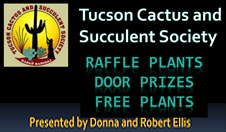




 Opuntia echios meristem
Opuntia echios meristem





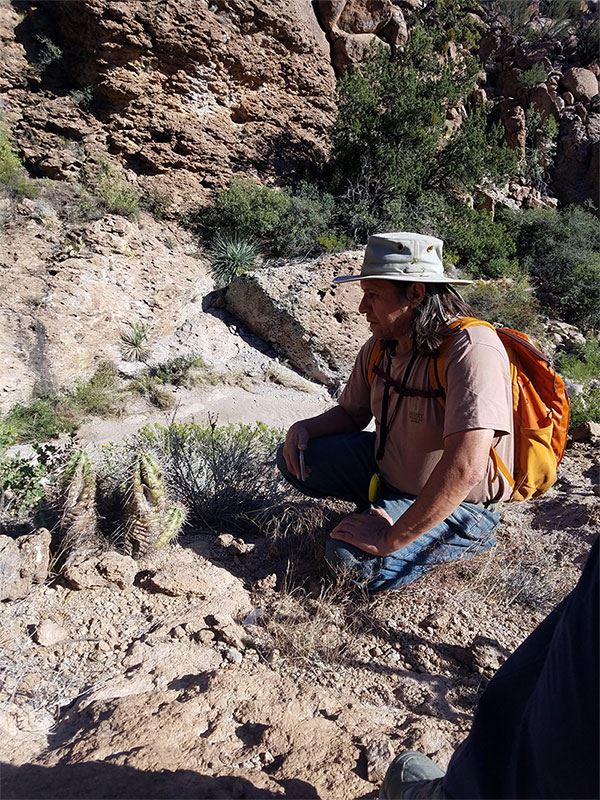
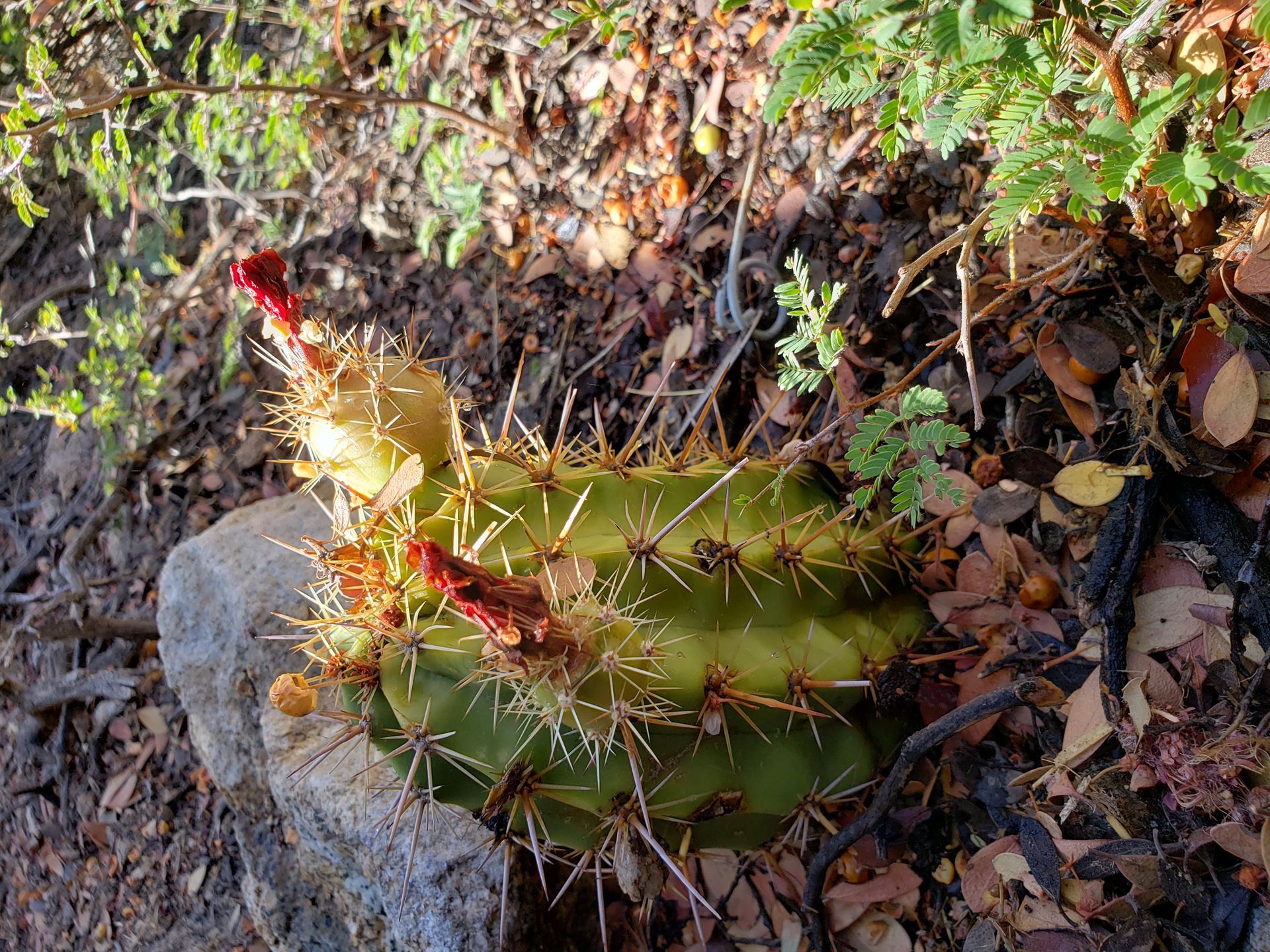



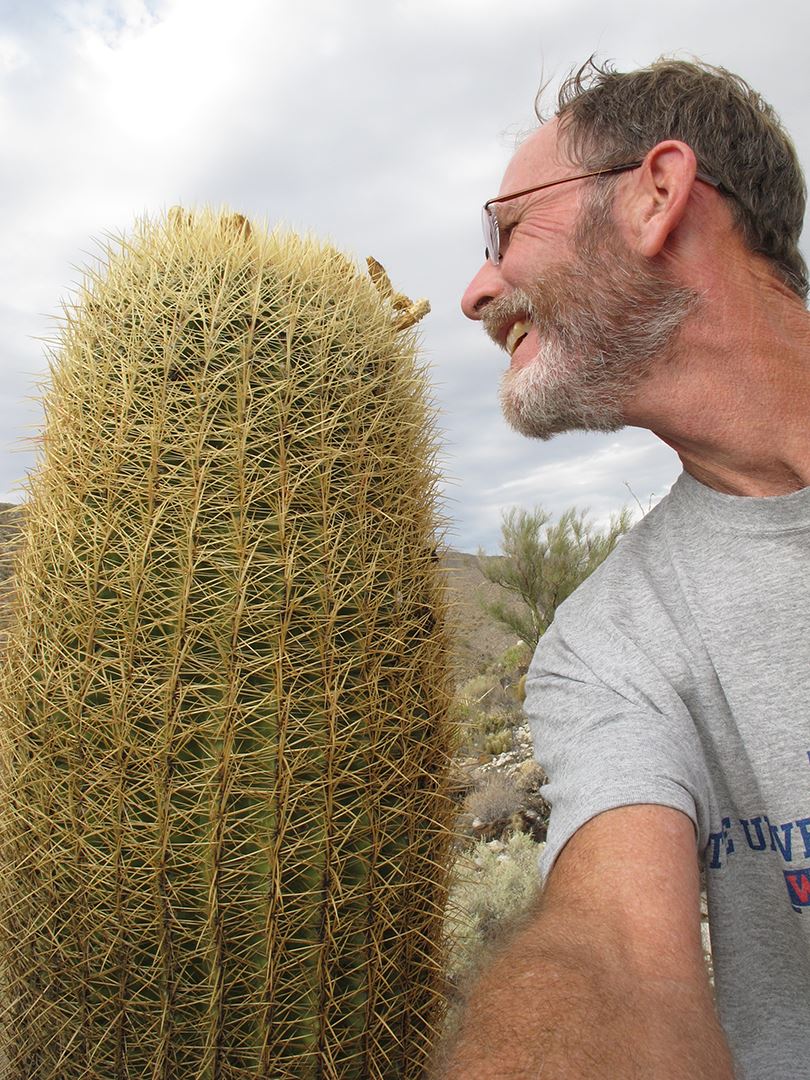
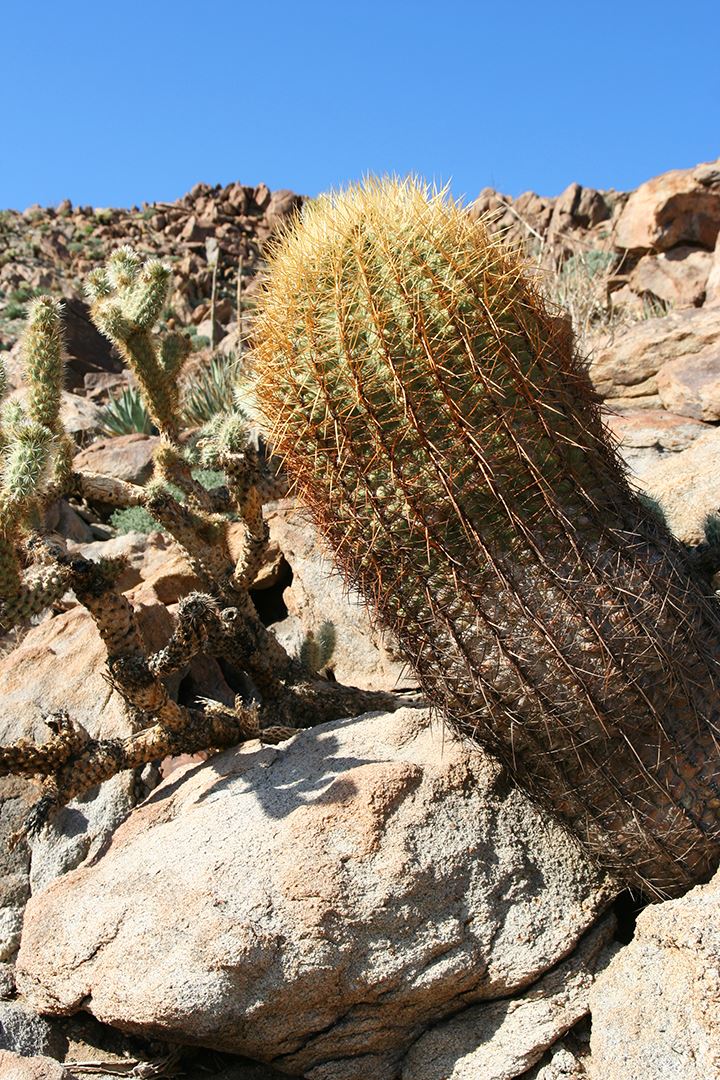
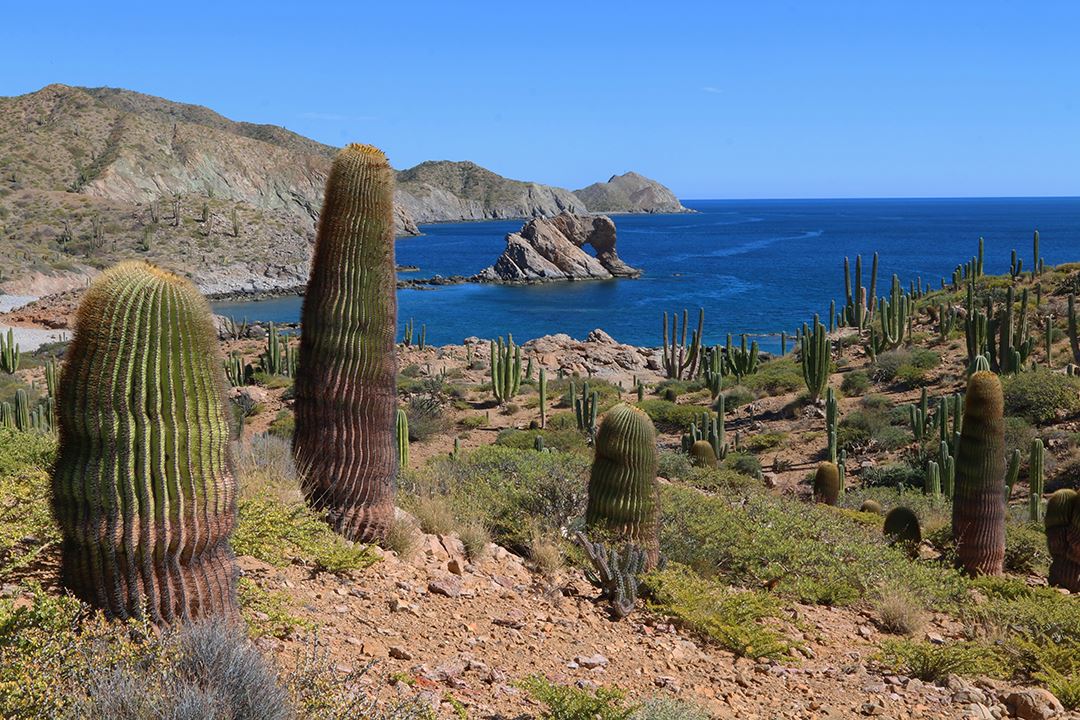
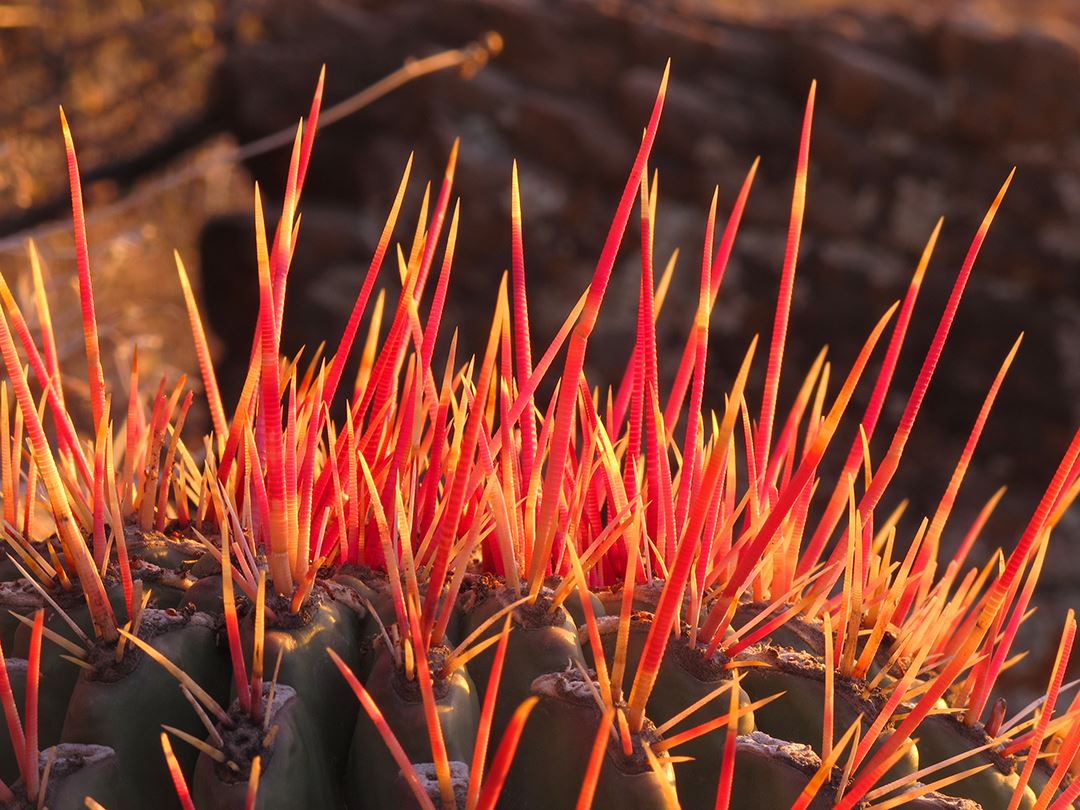
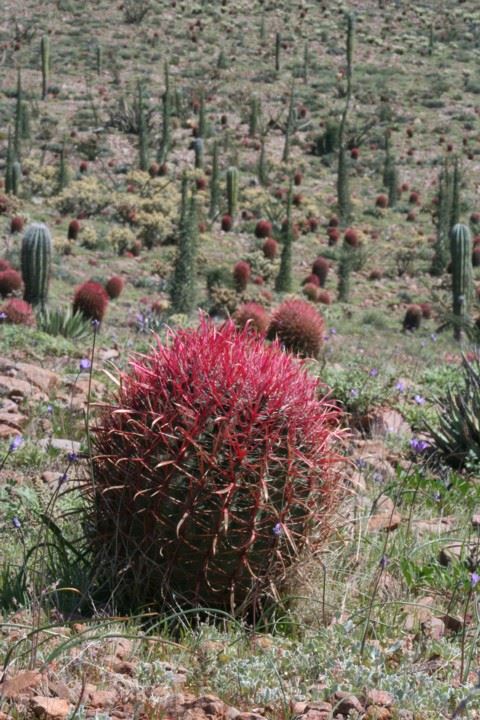


.png)

